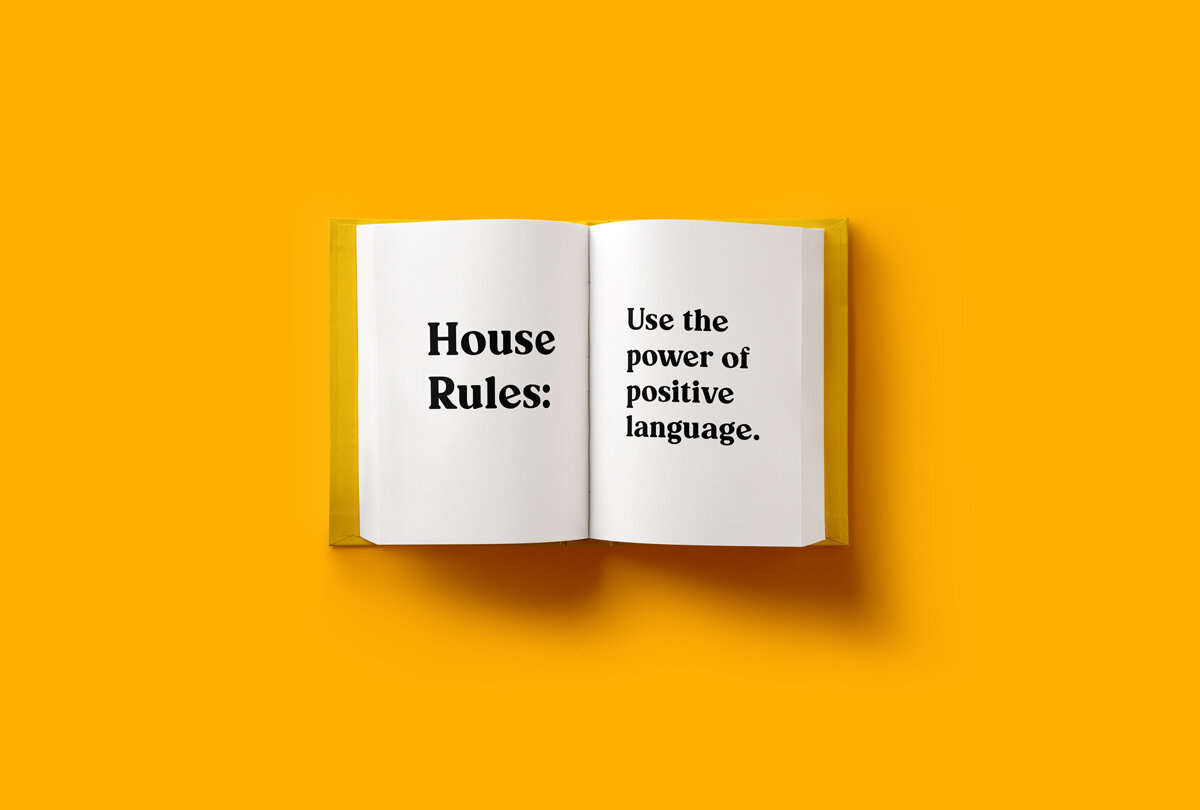The Power of Positive Language

It’s a scientific fact that hearing the word “no” causes our brains to release dozens of stress-producing hormones. These pesky hormones are the ones that influence our logic, reason, and even our communication skills. If you ask me, that’s not exactly the experience we want to give our customers when they reach out.
Let’s face it, we’ve all got enough stress to deal with - and we don’t need to add even more to someone’s plate. Your customers should feel comfortable, stress-free, and walk away from your conversations with a positive interaction.
So, how do you do that? It’s simple - start using more positive language.
You’re probably thinking to yourself: “Sure, it’s easy to communicate positively when things are going positive!” — but what about when the conversation is going downhill? Well, the first thing you need to do is start focusing on using positive phrases - rather than negative ones. Positive language in Customer Experience is focusing on what you can do, rather than what you cannot.
Don’t say:
“I don’t know.”
In Customer Experience, we know this phrase is the #1 way to frustrate a customer even further. It’s our job to literally know everything about the product, so why don’t we? Instead of panicking - flip it around into a positive. Your customer just stumped you - a literal expert at the product.
Say this instead:
“Hey, that’s a great question! Give me a few moments to reach out to my team and find that out.”
Boom! You’re instantly focusing on the positives, and now you’re doing something for the customer. You’re going out of your way to find an answer to their super-hard question. Now, that’s a great experience if you ask me.
Don’t say:
“Unfortunately, we don’t offer that.”
This phrase, my friends, is my ultimate pet-peeve. Remember when I mentioned the stress hormones your brain releases when you hear “no?” Well, the word “Unfortunately” does the same thing. As soon as you heard that word, you’re just ready for some bad news.
Instead, there’s a simple trick to completely turn this phrase around.
Try this instead:
“Currently, we don’t offer that - but it’s a great suggestion and I’m happy to surface it to my team.”
With just one word, you’ve completely flipped a negative situation into a positive one. Not only that, you’ve made a suggestion to your team that could gain them a new customer in the future. Way to go, you deserve a raise!
Now that you’ve got the basics down on using positive language, you need to implement it. I challenge you to three practices to implement into your workflow:
Use the power of YES.
Barbara Fredrickson, one of the founders of Positive Psychology, tells us that we need to generate at least 3 positive thoughts and feelings for each expression of negativity. If you find yourself expressing negativity in your communications with your customer, reframe it, and express at least 3 positive thoughts instead.
Take a look back at your previous conversations.
Search for any negative phrases: “can’t”, “won’t”, “no.” etc. How could you have rephrased those? Are the people reading those messages feeling helped or shut down?
Start adding in affirming and energetic vocabulary.
Make a note of positive words, and sprinkle them into your responses to your customers. Just a few that I recommend are:
Definitely
Absolutely
Certainly
Fantastic
Great
Understand
Always offer an alternative.
Even when you can’t give the customer exactly what they want - you can still offer them something. Whether that’s a date on when their product will be available, or simply just expressing that they had a fantastic idea that you’ll suggest to your team. Let your customer walk away knowing that you tried everything that you could, rather than just shutting them down.
Remember, your words mean everything. Focus on the feeling you want people to have when they interact with you. Choose your words wisely and remember that you’ll not only feel better, live longer, but also build deeper and more trusting relationships with others. The bottom line is - positive language is going to equal a happy interaction.
